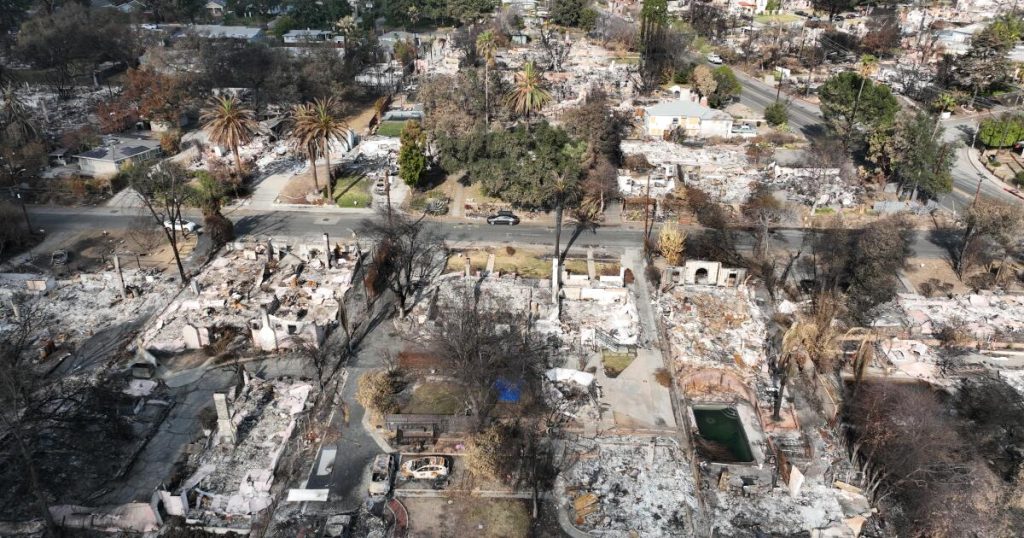A recent study conducted by UCLA has shed light on the challenges faced by Asian communities in Los Angeles County during recent wildfires. The study, which is part of a broader research series examining the impact of wildfires on different racial and ethnic groups, found that many Asian residents struggled to access critical information about emergency evacuations and recovery efforts due to language barriers. More than 12,000 Asian immigrants and their descendants living in four evacuation zones—Palisades, Eaton, Hurst, and Hughes—required language assistance. These individuals make up 15% of the total population in these areas, yet the study revealed a significant lack of multilingual communication alerts regarding fire warnings, evacuation procedures, and relief services. This issue is part of a larger challenge in Los Angeles County, where over half a million Asian Americans are classified as having Limited English Proficiency (LEP), meaning they speak English less than “very well.”
Manjusha Kulkarni, executive director of the Asian American and Pacific Islanders Equity Alliance (AAPI Equity Alliance), a coalition of 50 community-based organizations, highlighted some of the specific difficulties faced by residents. Many reported that fire alerts were only sent in English and Spanish, leaving those who spoke other languages without access to vital information. Some residents even avoided evacuation centers because there were no interpreters available to assist them. Others struggled to find online information about the fires in their native languages. In response to these gaps, the AAPI Equity Alliance created a resource guide in multiple languages, including English, traditional and simplified Chinese, Hindi, Korean, Thai, and Vietnamese. The guide, available on their website, provides information on shelter, housing, childcare, and other essential services. This effort underscores the critical need for inclusive communication during emergencies.
The Los Angeles County’s Coordinated Joint Information Center, responsible for releasing public information during emergencies, acknowledged the limitations of the Integrated Alert and Warning System maintained by the Federal Emergency Management Agency (FEMA). County officials explained that alerts are currently limited to English and Spanish due to system constraints. However, they emphasized that these alerts are just one of several means of notifying residents during an emergency. Other strategies include the use of the Alert LA County messaging platform, door knocks, and first responders using loudspeakers to inform residents. Additionally, the county’s Disaster Resource Centers include multilingual staff and materials translated into multiple languages, such as Chinese, Korean, Tagalog, and Vietnamese. Many social media messages from county accounts are also regularly posted in multiple languages. Starting this week, the Board of Supervisors’ weekly news conferences will be available in over 60 languages through real-time language translation services.
While these efforts are commendable, researchers and Asian American advocates argue that more needs to be done to address the language needs of Asian communities. The diversity within these communities is vast, with individuals speaking a wide range of languages, including Cantonese, Thai, Punjabi, and Hindi, in addition to Chinese, Korean, Tagalog, and Vietnamese. The study used U.S. census data and information from elementary schools to develop a detailed profile of the population in the four evacuation zones. It found that older individuals, aged 45 and over, were more likely to have higher rates of LEP. For instance, the Palisades fire area had the highest proportion of LEP Asians, followed by the Eaton evacuation zone, where a significant segment of the Asian population resides. These findings highlight the importance of tailoring emergency communication to the specific needs of affected communities.
Chhandara Pech, a researcher and deputy director at the UCLA Center for Neighborhood Knowledge, emphasized that government agencies must be more precise in the information they distribute to neighborhoods. “Government agencies should not only focus on reaching the largest population affected by the wildfires but also prioritize supporting the most vulnerable and hard-to-reach communities,” Pech said. This study serves as a reminder of the ongoing need to adapt emergency preparedness and response plans to the needs of vulnerable groups, including immigrants, low-income individuals, the elderly, and people with disabilities. California has already taken steps in this direction with the launch of Listos California, a state program that partners with community groups and local governments to prepare vulnerable communities for major disasters. The program played a vital role in distributing information during the COVID-19 pandemic and has proven effective in addressing language barriers and other challenges.
Kulkarni echoed the importance of addressing language barriers in emergency response plans and urged county officials to partner with local community groups to ensure the needs of all residents are met. “Language is a critical component of providing resources and services,” she said. “And while many of these responsibilities are governmental, they can and should partner with local community groups because we know the needs.” By working together, officials and community organizations can create more inclusive and effective emergency response systems. As Kulkarni put it, “Let’s do this right. Let’s partner and make sure we’re meeting the needs of these folks.” This collaborative approach is essential for building resilience and ensuring that no one is left behind during times of crisis.
